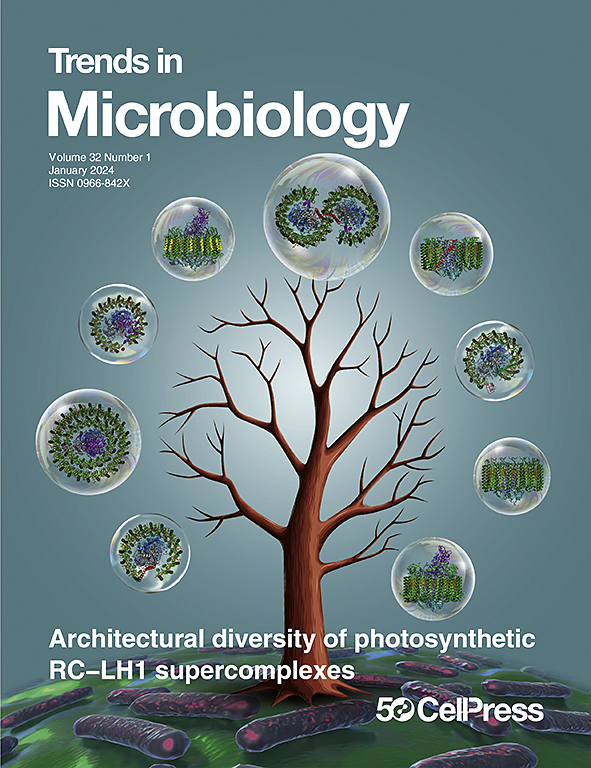利用多组学和机器学习解锁抗菌素耐药性。
IF 14
1区 生物学
Q1 BIOCHEMISTRY & MOLECULAR BIOLOGY
引用次数: 0
摘要
全球抗菌素耐药性(AMR)紧急情况是由复杂和不断发展的分子机制驱动的。尖端的机器学习方法和多组学技术可以通过以前所未有的精度和速度预测新的AMR生物标志物和结果,为AMR的分子基础提供关键见解,从而帮助应对这一危机。本文章由计算机程序翻译,如有差异,请以英文原文为准。
Unlocking antimicrobial resistance with multiomics and machine learning.
The global antimicrobial resistance (AMR) emergency is driven by complex and evolving molecular mechanisms. Cutting-edge machine learning methods and multiomics technologies can help to combat this crisis by predicting novel AMR biomarkers and outcomes with unprecedented precision and speed, offering critical insights into the molecular underpinnings of AMR.
求助全文
通过发布文献求助,成功后即可免费获取论文全文。
去求助
来源期刊

Trends in Microbiology
生物-生化与分子生物学
CiteScore
25.30
自引率
0.60%
发文量
193
审稿时长
6-12 weeks
期刊介绍:
Trends in Microbiology serves as a comprehensive, multidisciplinary forum for discussing various aspects of microbiology, spanning cell biology, immunology, genetics, evolution, virology, bacteriology, protozoology, and mycology. In the rapidly evolving field of microbiology, technological advancements, especially in genome sequencing, impact prokaryote biology from pathogens to extremophiles, influencing developments in drugs, vaccines, and industrial enzyme research.
 求助内容:
求助内容: 应助结果提醒方式:
应助结果提醒方式:


